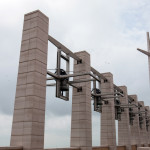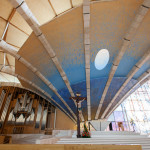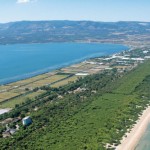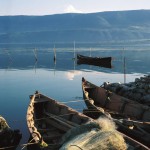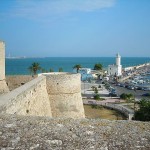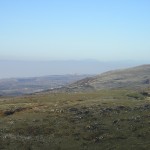The town of the Gargano in which lived Padre Pio –
The Gargano is one of religious destinations most visited in Italy thanks also to San Giovanni Rotondo. This town, situated on the slopes of Monte Calvo, every year is a destination for thousands of faithful which come to pay tribute to the memory of Padre Pio, the friar with the stigmata, proclaimed a saint in 2002 and very beloved by the Christian community.
The Capuchin friar has spent almost all his life in San Giovanni Rotondo, accomplishing charitable works that have made him famous. Between all the Casa Sollievo della Sofferenza (Home for the Relief of the Suffering), the hospital inaugurated in the years ’50 and today one of the largest polyclinics in Italy.
To accommodate the growing number of pilgrims, next to the Convent of Santa Maria delle Grazie, where up to a few years ago were guarded the relics of the Saint, was built a new church: a majestic architectural work, designed by architect Renzo Piano, inaugurated in 2004 and capable of containing 7.000 people.
The origins of San Giovanni Rotondo are in reality much more ancient: the town, in fact, was founded in 1095 on the ruins of an ancient village dating to the IV century BC, of which still today are visible some remains, as some graves and a circular baptistery from which hence the name “Rotondo” (Round).
If you visit San Giovanni Rotondo, during a holiday in Apulia, you will plunge into a place full of spirituality and mysticism: an obligatory destination for devotees and tourists.
The Church of Santa Maria delle Grazie, originally dedicated to Santa Maria degli Angeli, is the old Sanctuary, inaugurated in 1959 for the will and stubbornness of Padre Pio. Until the completion of the new sanctuary, this church has collected thousands of faithful and pilgrims arrived every year in Apulian town for visiting the places of the Saint. The crypt of the Church hosted, until a few years ago, also the grave of Padre Pio, which today has been moved in the crypt of the new complex adjacent.
The Capuchin Convent, built in 1540, is the place where Padre Pio lived from September 4, 1916 until September 23, 1968, date of his death. It was here that Padre Pio received the stigmata in 1918, and always here occurred all those supernatural events that brought to the beatification and subsequent canonization of the friar.
The historic centre has a typical architecture of the Gargano with materials coming from the land and the simplicity of the buildings made of stone. Between narrow streets and stairways, called “mugnali”, you will find many churches which testify to the deep religious tradition of the town even before the arrival of the friar. Among these there is also the church from which derives the name of the town: dedicated to San Giovanni Battista, is called “la Rotonda” for its circular plan. Before the consecration, was a pagan temple dedicated to the god Janus, and is today the oldest building of the country. Worth a visit are also the Church of Sant’Orsola, the Church of Sant’Onofrio Anacoreta, the Church of San Nicola, the Church of Santa Caterina, the oldest in the town and the Mother Church of San Leonardo.
Art and architecture are not lacking in San Giovanni Rotondo. Among the more important examples there are Palace Canaviglia, built starting from 1615, and Palace Verna, built starting from XVII century and home of one of bourgeois families of San Giovanni Rotondo.
Monte Calvo, which owes its name to its nude and stony slopes, with its 1056 meters of altitude, is the highest mountain of all the Gargano. From its summit, in fact, in conditions of favorable light, you can admire the splendid views overlooking the valleys below, on the Gulf of Manfredonia, on the Varano Lake, on the Apennine massif of the Maiella, on the Tremiti Islands and on the Monte Vulture. Together with the Piana of Montenero, Monte Calvo is characterized for the high concentration of dolines of karst origin.
Events
- Anniversary of the birth of Padre Pio: 25 May
- Patronal festival of San Giovanni Battista: 24 June
- International Festival of folklore: in August
- Festival of Santa Maria delle Grazie: 8-9-10 September
- The vigil for the anniversary of the death of Padre Pio: from 22 to 23 September







